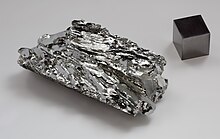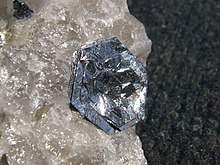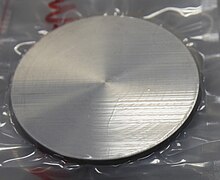మోలిబ్డినం
 | ||||||||||||||||||||||||||||||||||||||||||||||||||||||||||||||||||||||||||||||||||||||||||||||||||||||||||||||||||||||||||||||||||||||||||||||||||||||||||||||||||||||||||||||||||||||||||||||||||||||||||||||||||||||||||||||||||||||
| మాలిబ్డెనం | ||||||||||||||||||||||||||||||||||||||||||||||||||||||||||||||||||||||||||||||||||||||||||||||||||||||||||||||||||||||||||||||||||||||||||||||||||||||||||||||||||||||||||||||||||||||||||||||||||||||||||||||||||||||||||||||||||||||
|---|---|---|---|---|---|---|---|---|---|---|---|---|---|---|---|---|---|---|---|---|---|---|---|---|---|---|---|---|---|---|---|---|---|---|---|---|---|---|---|---|---|---|---|---|---|---|---|---|---|---|---|---|---|---|---|---|---|---|---|---|---|---|---|---|---|---|---|---|---|---|---|---|---|---|---|---|---|---|---|---|---|---|---|---|---|---|---|---|---|---|---|---|---|---|---|---|---|---|---|---|---|---|---|---|---|---|---|---|---|---|---|---|---|---|---|---|---|---|---|---|---|---|---|---|---|---|---|---|---|---|---|---|---|---|---|---|---|---|---|---|---|---|---|---|---|---|---|---|---|---|---|---|---|---|---|---|---|---|---|---|---|---|---|---|---|---|---|---|---|---|---|---|---|---|---|---|---|---|---|---|---|---|---|---|---|---|---|---|---|---|---|---|---|---|---|---|---|---|---|---|---|---|---|---|---|---|---|---|---|---|---|---|---|---|---|---|---|---|---|---|---|---|---|---|---|---|---|---|---|---|
| Pronunciation | /məˈlɪbdənəm/ | |||||||||||||||||||||||||||||||||||||||||||||||||||||||||||||||||||||||||||||||||||||||||||||||||||||||||||||||||||||||||||||||||||||||||||||||||||||||||||||||||||||||||||||||||||||||||||||||||||||||||||||||||||||||||||||||||||||
| Appearance | gray metallic | |||||||||||||||||||||||||||||||||||||||||||||||||||||||||||||||||||||||||||||||||||||||||||||||||||||||||||||||||||||||||||||||||||||||||||||||||||||||||||||||||||||||||||||||||||||||||||||||||||||||||||||||||||||||||||||||||||||
| Standard atomic weight Ar°(Mo) | ||||||||||||||||||||||||||||||||||||||||||||||||||||||||||||||||||||||||||||||||||||||||||||||||||||||||||||||||||||||||||||||||||||||||||||||||||||||||||||||||||||||||||||||||||||||||||||||||||||||||||||||||||||||||||||||||||||||
| మాలిబ్డెనం in the periodic table | ||||||||||||||||||||||||||||||||||||||||||||||||||||||||||||||||||||||||||||||||||||||||||||||||||||||||||||||||||||||||||||||||||||||||||||||||||||||||||||||||||||||||||||||||||||||||||||||||||||||||||||||||||||||||||||||||||||||
| ||||||||||||||||||||||||||||||||||||||||||||||||||||||||||||||||||||||||||||||||||||||||||||||||||||||||||||||||||||||||||||||||||||||||||||||||||||||||||||||||||||||||||||||||||||||||||||||||||||||||||||||||||||||||||||||||||||||
| Group | మూస:Infobox element/symbol-to-group/format | |||||||||||||||||||||||||||||||||||||||||||||||||||||||||||||||||||||||||||||||||||||||||||||||||||||||||||||||||||||||||||||||||||||||||||||||||||||||||||||||||||||||||||||||||||||||||||||||||||||||||||||||||||||||||||||||||||||
| Period | period 5 | |||||||||||||||||||||||||||||||||||||||||||||||||||||||||||||||||||||||||||||||||||||||||||||||||||||||||||||||||||||||||||||||||||||||||||||||||||||||||||||||||||||||||||||||||||||||||||||||||||||||||||||||||||||||||||||||||||||
| Block | d-block | |||||||||||||||||||||||||||||||||||||||||||||||||||||||||||||||||||||||||||||||||||||||||||||||||||||||||||||||||||||||||||||||||||||||||||||||||||||||||||||||||||||||||||||||||||||||||||||||||||||||||||||||||||||||||||||||||||||
| Electron configuration | [Kr] 4d5 5s1 | |||||||||||||||||||||||||||||||||||||||||||||||||||||||||||||||||||||||||||||||||||||||||||||||||||||||||||||||||||||||||||||||||||||||||||||||||||||||||||||||||||||||||||||||||||||||||||||||||||||||||||||||||||||||||||||||||||||
| Electrons per shell | 2, 8, 18, 13, 1 | |||||||||||||||||||||||||||||||||||||||||||||||||||||||||||||||||||||||||||||||||||||||||||||||||||||||||||||||||||||||||||||||||||||||||||||||||||||||||||||||||||||||||||||||||||||||||||||||||||||||||||||||||||||||||||||||||||||
| Physical properties | ||||||||||||||||||||||||||||||||||||||||||||||||||||||||||||||||||||||||||||||||||||||||||||||||||||||||||||||||||||||||||||||||||||||||||||||||||||||||||||||||||||||||||||||||||||||||||||||||||||||||||||||||||||||||||||||||||||||
| Phase at STP | solid | |||||||||||||||||||||||||||||||||||||||||||||||||||||||||||||||||||||||||||||||||||||||||||||||||||||||||||||||||||||||||||||||||||||||||||||||||||||||||||||||||||||||||||||||||||||||||||||||||||||||||||||||||||||||||||||||||||||
| Melting point | 2896 K (2623 °C, 4753 °F) | |||||||||||||||||||||||||||||||||||||||||||||||||||||||||||||||||||||||||||||||||||||||||||||||||||||||||||||||||||||||||||||||||||||||||||||||||||||||||||||||||||||||||||||||||||||||||||||||||||||||||||||||||||||||||||||||||||||
| Boiling point | 4912 K (4639 °C, 8382 °F) | |||||||||||||||||||||||||||||||||||||||||||||||||||||||||||||||||||||||||||||||||||||||||||||||||||||||||||||||||||||||||||||||||||||||||||||||||||||||||||||||||||||||||||||||||||||||||||||||||||||||||||||||||||||||||||||||||||||
| Density (near r.t.) | 10.28 g/cm3 | |||||||||||||||||||||||||||||||||||||||||||||||||||||||||||||||||||||||||||||||||||||||||||||||||||||||||||||||||||||||||||||||||||||||||||||||||||||||||||||||||||||||||||||||||||||||||||||||||||||||||||||||||||||||||||||||||||||
| when liquid (at m.p.) | 9.33 g/cm3 | |||||||||||||||||||||||||||||||||||||||||||||||||||||||||||||||||||||||||||||||||||||||||||||||||||||||||||||||||||||||||||||||||||||||||||||||||||||||||||||||||||||||||||||||||||||||||||||||||||||||||||||||||||||||||||||||||||||
| Heat of fusion | 37.48 kJ/mol | |||||||||||||||||||||||||||||||||||||||||||||||||||||||||||||||||||||||||||||||||||||||||||||||||||||||||||||||||||||||||||||||||||||||||||||||||||||||||||||||||||||||||||||||||||||||||||||||||||||||||||||||||||||||||||||||||||||
| Heat of vaporization | 598 kJ/mol | |||||||||||||||||||||||||||||||||||||||||||||||||||||||||||||||||||||||||||||||||||||||||||||||||||||||||||||||||||||||||||||||||||||||||||||||||||||||||||||||||||||||||||||||||||||||||||||||||||||||||||||||||||||||||||||||||||||
| Molar heat capacity | 24.06 J/(mol·K) | |||||||||||||||||||||||||||||||||||||||||||||||||||||||||||||||||||||||||||||||||||||||||||||||||||||||||||||||||||||||||||||||||||||||||||||||||||||||||||||||||||||||||||||||||||||||||||||||||||||||||||||||||||||||||||||||||||||
Vapor pressure
| ||||||||||||||||||||||||||||||||||||||||||||||||||||||||||||||||||||||||||||||||||||||||||||||||||||||||||||||||||||||||||||||||||||||||||||||||||||||||||||||||||||||||||||||||||||||||||||||||||||||||||||||||||||||||||||||||||||||
| Atomic properties | ||||||||||||||||||||||||||||||||||||||||||||||||||||||||||||||||||||||||||||||||||||||||||||||||||||||||||||||||||||||||||||||||||||||||||||||||||||||||||||||||||||||||||||||||||||||||||||||||||||||||||||||||||||||||||||||||||||||
| Oxidation states | −4, −2, −1, 0, +1,[3] +2, +3, +4, +5, +6 (a strongly acidic oxide) | |||||||||||||||||||||||||||||||||||||||||||||||||||||||||||||||||||||||||||||||||||||||||||||||||||||||||||||||||||||||||||||||||||||||||||||||||||||||||||||||||||||||||||||||||||||||||||||||||||||||||||||||||||||||||||||||||||||
| Electronegativity | Pauling scale: 2.16 | |||||||||||||||||||||||||||||||||||||||||||||||||||||||||||||||||||||||||||||||||||||||||||||||||||||||||||||||||||||||||||||||||||||||||||||||||||||||||||||||||||||||||||||||||||||||||||||||||||||||||||||||||||||||||||||||||||||
| Atomic radius | empirical: 139 pm | |||||||||||||||||||||||||||||||||||||||||||||||||||||||||||||||||||||||||||||||||||||||||||||||||||||||||||||||||||||||||||||||||||||||||||||||||||||||||||||||||||||||||||||||||||||||||||||||||||||||||||||||||||||||||||||||||||||
| Covalent radius | 154±5 pm | |||||||||||||||||||||||||||||||||||||||||||||||||||||||||||||||||||||||||||||||||||||||||||||||||||||||||||||||||||||||||||||||||||||||||||||||||||||||||||||||||||||||||||||||||||||||||||||||||||||||||||||||||||||||||||||||||||||
| Other properties | ||||||||||||||||||||||||||||||||||||||||||||||||||||||||||||||||||||||||||||||||||||||||||||||||||||||||||||||||||||||||||||||||||||||||||||||||||||||||||||||||||||||||||||||||||||||||||||||||||||||||||||||||||||||||||||||||||||||
| Natural occurrence | primordial | |||||||||||||||||||||||||||||||||||||||||||||||||||||||||||||||||||||||||||||||||||||||||||||||||||||||||||||||||||||||||||||||||||||||||||||||||||||||||||||||||||||||||||||||||||||||||||||||||||||||||||||||||||||||||||||||||||||
| Crystal structure | body-centered cubic (bcc) | |||||||||||||||||||||||||||||||||||||||||||||||||||||||||||||||||||||||||||||||||||||||||||||||||||||||||||||||||||||||||||||||||||||||||||||||||||||||||||||||||||||||||||||||||||||||||||||||||||||||||||||||||||||||||||||||||||||
| Speed of sound thin rod | 5400 m/s (at r.t.) | |||||||||||||||||||||||||||||||||||||||||||||||||||||||||||||||||||||||||||||||||||||||||||||||||||||||||||||||||||||||||||||||||||||||||||||||||||||||||||||||||||||||||||||||||||||||||||||||||||||||||||||||||||||||||||||||||||||
| Thermal expansion | 4.8 µm/(m⋅K) (at 25 °C) | |||||||||||||||||||||||||||||||||||||||||||||||||||||||||||||||||||||||||||||||||||||||||||||||||||||||||||||||||||||||||||||||||||||||||||||||||||||||||||||||||||||||||||||||||||||||||||||||||||||||||||||||||||||||||||||||||||||
| Thermal conductivity | 138 W/(m⋅K) | |||||||||||||||||||||||||||||||||||||||||||||||||||||||||||||||||||||||||||||||||||||||||||||||||||||||||||||||||||||||||||||||||||||||||||||||||||||||||||||||||||||||||||||||||||||||||||||||||||||||||||||||||||||||||||||||||||||
| Thermal diffusivity | 54.3[4] mm2/s (at 300 K) | |||||||||||||||||||||||||||||||||||||||||||||||||||||||||||||||||||||||||||||||||||||||||||||||||||||||||||||||||||||||||||||||||||||||||||||||||||||||||||||||||||||||||||||||||||||||||||||||||||||||||||||||||||||||||||||||||||||
| Electrical resistivity | 53.4 n Ω⋅m (at 20 °C) | |||||||||||||||||||||||||||||||||||||||||||||||||||||||||||||||||||||||||||||||||||||||||||||||||||||||||||||||||||||||||||||||||||||||||||||||||||||||||||||||||||||||||||||||||||||||||||||||||||||||||||||||||||||||||||||||||||||
| Magnetic ordering | paramagnetic[5] | |||||||||||||||||||||||||||||||||||||||||||||||||||||||||||||||||||||||||||||||||||||||||||||||||||||||||||||||||||||||||||||||||||||||||||||||||||||||||||||||||||||||||||||||||||||||||||||||||||||||||||||||||||||||||||||||||||||
| Young's modulus | 329 GPa | |||||||||||||||||||||||||||||||||||||||||||||||||||||||||||||||||||||||||||||||||||||||||||||||||||||||||||||||||||||||||||||||||||||||||||||||||||||||||||||||||||||||||||||||||||||||||||||||||||||||||||||||||||||||||||||||||||||
| Shear modulus | 126 GPa | |||||||||||||||||||||||||||||||||||||||||||||||||||||||||||||||||||||||||||||||||||||||||||||||||||||||||||||||||||||||||||||||||||||||||||||||||||||||||||||||||||||||||||||||||||||||||||||||||||||||||||||||||||||||||||||||||||||
| Bulk modulus | 230 GPa | |||||||||||||||||||||||||||||||||||||||||||||||||||||||||||||||||||||||||||||||||||||||||||||||||||||||||||||||||||||||||||||||||||||||||||||||||||||||||||||||||||||||||||||||||||||||||||||||||||||||||||||||||||||||||||||||||||||
| Poisson ratio | 0.31 | |||||||||||||||||||||||||||||||||||||||||||||||||||||||||||||||||||||||||||||||||||||||||||||||||||||||||||||||||||||||||||||||||||||||||||||||||||||||||||||||||||||||||||||||||||||||||||||||||||||||||||||||||||||||||||||||||||||
| Mohs hardness | 5.5 | |||||||||||||||||||||||||||||||||||||||||||||||||||||||||||||||||||||||||||||||||||||||||||||||||||||||||||||||||||||||||||||||||||||||||||||||||||||||||||||||||||||||||||||||||||||||||||||||||||||||||||||||||||||||||||||||||||||
| Vickers hardness | 1530 MPa | |||||||||||||||||||||||||||||||||||||||||||||||||||||||||||||||||||||||||||||||||||||||||||||||||||||||||||||||||||||||||||||||||||||||||||||||||||||||||||||||||||||||||||||||||||||||||||||||||||||||||||||||||||||||||||||||||||||
| Brinell hardness | 1500 MPa | |||||||||||||||||||||||||||||||||||||||||||||||||||||||||||||||||||||||||||||||||||||||||||||||||||||||||||||||||||||||||||||||||||||||||||||||||||||||||||||||||||||||||||||||||||||||||||||||||||||||||||||||||||||||||||||||||||||
| CAS Number | 7439-98-7 | |||||||||||||||||||||||||||||||||||||||||||||||||||||||||||||||||||||||||||||||||||||||||||||||||||||||||||||||||||||||||||||||||||||||||||||||||||||||||||||||||||||||||||||||||||||||||||||||||||||||||||||||||||||||||||||||||||||
| History | ||||||||||||||||||||||||||||||||||||||||||||||||||||||||||||||||||||||||||||||||||||||||||||||||||||||||||||||||||||||||||||||||||||||||||||||||||||||||||||||||||||||||||||||||||||||||||||||||||||||||||||||||||||||||||||||||||||||
| Discovery | Carl Wilhelm Scheele (1778) | |||||||||||||||||||||||||||||||||||||||||||||||||||||||||||||||||||||||||||||||||||||||||||||||||||||||||||||||||||||||||||||||||||||||||||||||||||||||||||||||||||||||||||||||||||||||||||||||||||||||||||||||||||||||||||||||||||||
| First isolation | Peter Jacob Hjelm (1781) | |||||||||||||||||||||||||||||||||||||||||||||||||||||||||||||||||||||||||||||||||||||||||||||||||||||||||||||||||||||||||||||||||||||||||||||||||||||||||||||||||||||||||||||||||||||||||||||||||||||||||||||||||||||||||||||||||||||
| Isotopes of మాలిబ్డెనం | ||||||||||||||||||||||||||||||||||||||||||||||||||||||||||||||||||||||||||||||||||||||||||||||||||||||||||||||||||||||||||||||||||||||||||||||||||||||||||||||||||||||||||||||||||||||||||||||||||||||||||||||||||||||||||||||||||||||
| Template:infobox మాలిబ్డెనం isotopes does not exist | ||||||||||||||||||||||||||||||||||||||||||||||||||||||||||||||||||||||||||||||||||||||||||||||||||||||||||||||||||||||||||||||||||||||||||||||||||||||||||||||||||||||||||||||||||||||||||||||||||||||||||||||||||||||||||||||||||||||
మోలిబ్డినం అనేది Mo రసాయన చిహ్నంతో, పరమాణు సంఖ్య 42 కలిగిన రసాయన మూలకం. ఆవర్తన పట్టికలో ఇది పీరియడ్ 5, గ్రూపు 6లో ఉంటుంది. ఈ పేరు నియో-లాటిన్ మాలిబ్డెనమ్ నుండి వచ్చింది. మోలిబ్డినం ఖనిజాలు చరిత్ర అంతటా ప్రసిద్ది చెందాయి. అయితే ఈ మూలకం 1778లో కార్ల్ విల్హెల్మ్ షీలే కనుగొన్నాడు. (ఇతర లోహాల ఖనిజ లవణాల నుండి దీనిని వేరు చేసే అర్థంలో). 1781లో పీటర్ జాకబ్ హ్జెల్మ్ ఈ లోహాన్ని మొదటిసారిగా వేరుచేసాడు. [7]
మోలిబ్డినం భూమిపై ఒక స్వేచ్ఛా లోహం లాగా సహజంగా ఏర్పడదు; ఇది ఖనిజాలలో వివిధ ఆక్సీకరణ స్థితులలో మాత్రమే లభిస్తుంది. స్వేచ్ఛా మూలకం, బూడిద రంగుతో కూడిన వెండి రంగు లోహం. మూలకాల్లో ఆరవ అత్యధిక ద్రవీభవన స్థానం కలిగినది. ఇది మిశ్రమాలలో గట్టి, స్థిరమైన కార్బైడ్లను ఏర్పరుస్తుంది. ఈ కారణంగా ప్రపంచంలో ఈ మూలకపు ఉత్పత్తి అత్యధిక భాగాన్ని (సుమారు 80%) ఉక్కు మిశ్రమాలలో ఉపయోగిస్తారు. ఇందులో అధిక-శక్తి మిశ్రమాలు, సూపర్ అల్లాయ్లు ఉన్నాయి.
లక్షణాలు
[మార్చు]భౌతిక ధర్మాలు
[మార్చు]దాని స్వచ్ఛమైన రూపంలో, మోలిబ్డినం 5.5 మోహ్స్ కాఠిన్యం, 95.95 g/mol ప్రామాణిక పరమాణు భారంతో వెండి-బూడిద రంగులో ఉండే లోహం. [8] దీని ద్రవీభవన స్థానం 2,623 °C (4,753 °F) ; సహజంగా లభించే మూలకాలలో, టాంటలమ్, ఆస్మియం, రీనియం, టంగ్స్టన్, కార్బన్ లకు మాత్రమే దీనికంటే ఎక్కువ ద్రవీభవన స్థానం ఉంది. వాణిజ్యపరంగా ఉపయోగించే లోహాలలో అతి తక్కువ ఉష్ణ వ్యాకోచ గుణకం ఉన్న వాటిలో ఇది ఒకటి.
రసాయన ధర్మాలు
[మార్చు]మోలిబ్డినం పౌలింగ్ స్కేల్పై 2.16 ఎలక్ట్రోనెగటివిటీ కలిగిన పరివర్తన లోహం . ఇది గది ఉష్ణోగ్రత వద్ద ఆక్సిజన్ లేదా నీటితో కంటికి కనిపించేలా చర్య జరపదు. మోలిబ్డినం యొక్క బలహీనమైన ఆక్సీకరణ 300 °C (572 °F) వద్ద ప్రారంభమవుతుంది ; 600°C కంటే ఎక్కువ ఉష్ణోగ్రతల వద్ద బల్క్ ఆక్సీకరణ జరుగుతుంది. ఫలితంగా మోలిబ్డినం ట్రైయాక్సైడ్ ఏర్పడుతుంది. అనేక బరువైన పరివర్తన లోహాల వలె, మోలిబ్డినం కూడా సజల ద్రావణంలో ఒక కేటయాన్ను ఏర్పరచడానికి అంతగా మొగ్గు చూపదు. అయితే Mo3+ కేటయాన్ జాగ్రత్తగా నియంత్రించబడిన పరిస్థితులలో అలా ప్రవర్తిస్తుంది.
మోలిబ్డినం వాయురూపంలో డయాటోమిక్ జాతి Mo2 ఉంటుంది. ఆ పరమాణువు 5 సాంప్రదాయిక బంధాలతో పాటు, బంధ కక్ష్యలలో జత చేయని రెండు ఎలక్ట్రాన్లతో సింగిలెట్ను ఏర్పరుస్తుంది. ఫలితంగా అష్ట బంధం ఏర్పడుతుంది. [9] [10]
ఐసోటోపులు
[మార్చు]మోలిబ్డినంకు 35 తెలిసిన ఐసోటోప్లు ఉన్నాయి. వీటి పరమాణు ద్రవ్యరాశి 83 నుండి 117 వరకు ఉంది. అలాగే నాలుగు మెటాస్టేబుల్ న్యూక్లియర్ ఐసోమర్లు కూడా ఉన్నాయి. 92, 94, 95, 96, 97, 98, 100 పరమాణు ద్రవ్యరాశితో ఏడు ఐసోటోపులు సహజంగా ఏర్పడతాయి. సహజంగా లభించే ఈ ఐసోటోపులలో మోలిబ్డినం-100 మాత్రమే అస్థిరంగా ఉంటుంది.
మోలిబ్డినం-98 అత్యంత సమృద్ధిగా ఉన్న ఐసోటోప్, మొత్తం మోలిబ్డినంలో 24.14% ఇది ఉంటుంది. మోలిబ్డినం-100 అర్ధ జీవితకాలం దాదాపు 1019 సం. ఇది రుథేనియం -100 లోకి డబుల్ బీటా క్షయం చెందుతుంది. మోలిబ్డినం యొక్క అన్ని అస్థిర ఐసోటోప్లు నియోబియం, టెక్నీటియం, రుథేనియం యొక్క ఐసోటోప్లుగా క్షీణిస్తాయి. సింథటిక్ రేడియో ఐసోటోపులలో, అత్యంత స్థిరమైనది 93Mo. దీని అర్ధ జీవిత కాలం 4,000 సంవత్సరాలు.
లభ్యత, ఉత్పత్తి
[మార్చు]
మోలిబ్డినం భూమి పైపెంకులో అత్యంత సమృద్ధిగా లభించే మూలకాల్లో 54వది. సగటున మిలియన్కు 1.5 భాగాలు ఉంటుంది. మహాసముద్రాలలో ఇది 25వ అత్యంత సమృద్ధిగా ఉండే మూలకం -సగటున బిలియన్కి 10 భాగాలు ఉంటుంది. విశ్వంలో ఇది 42వ అత్యంత సమృద్ధిగా ఉన్న మూలకం. [11] [12] రష్యన్ లూనా 24 నౌక, చంద్రునిపై మారే క్రిసియం నుండి సేకరించిన పైరోక్సిన్ శకలంలో మోలిబ్డినం-కలిగిన గ్రెయిన్ ఒకదాన్ని కనుగొంది (1 × 0.6 µm). [13] భూమి పైపెంకులో మోలిబ్డినం అరుదుగా లభించని లోటును అనేక నీటిలో కరగని ఖనిజాలలో ఉండడం భర్తీ చేస్తుంది. రాగి, సల్ఫర్తో కలిపి ఉంటుంది. వుల్ఫెనైట్ (PbMoO 4), పావెల్లైట్ (CaMoO 4) వంటి ఖనిజాలలో మోలిబ్డినం కనుగొనబడినప్పటికీ, ప్రధాన వాణిజ్య మూలం మాత్రం మాలిబ్డెనైట్ (Mo S 2). మోలిబ్డినంను ప్రధాన ధాతువుగా తవ్వడమే కాక, రాగి, టంగ్స్టన్ మైనింగులలో ఉప ఉత్పత్తిగా కూడా లభిస్తుంది. [14]
2011లో ప్రపంచంలో మోలిబ్డినం ఉత్పత్తి 2,50,000 టన్నులు. అతిపెద్ద ఉత్పత్తిదారులు చైనా (94,000 t), యునైటెడ్ స్టేట్స్ (64,000 t), చిలీ (38,000 t), పెరూ (18,000 t), మెక్సికో (12,000 t). మొత్తం నిల్వలు 1 కోటి టన్నులని అంచనా వేసారు. ఇవి ఎక్కువగా చైనా (4.3 Mt), అమెరికా (2.7 Mt), చిలీ (1.2 Mt) లలో కేంద్రీకృతమై ఉన్నాయి. ఖండం వారీగా, ప్రపంచ మోలిబ్డినం ఉత్పత్తిలో 93% ఉత్తర అమెరికా, దక్షిణ అమెరికా (ప్రధానంగా చిలీలో), చైనాల మధ్య సమానంగా ఉంది. యూరప్, మిగిలిన ఆసియా (ఎక్కువగా ఆర్మేనియా, రష్యా, ఇరాన్, మంగోలియా) మిగిలిన భాగాన్ని ఉత్పత్తి చేస్తాయి. [15]
అప్లికేషన్లు
[మార్చు]మిశ్రమాలు
[మార్చు]
ఉత్పత్తి చేయబడిన మోలిబ్డినంలో దాదాపు 86% మెటలర్జీలో ఉపయోగించబడుతుంది. మిగిలినది రసాయనిక అనువర్తనాల్లో ఉపయోగించబడుతుంది. అంచనా వేసిన ప్రపంచ వినియోగం - స్ట్రక్చరల్ స్టీల్ 35%, స్టెయిన్లెస్ స్టీల్ 25%, కెమికల్స్ 14%, టూల్ & హై-స్పీడ్ స్టీల్స్ 9%, కాస్ట్ ఐరన్ 6%, మోలిబ్డినం ఎలిమెంటల్ మెటల్ 6%, సూపర్ అల్లాయ్లు 5%. [16]
మోలిబ్డినం విపరీతమైన ఉష్ణోగ్రతల వద్ద పెద్దగా వ్యాకోచించకుండా, మెత్తబడకుండా తట్టుకోగలదు. సైనిక కవచం, విమాన భాగాలు, ఎలక్ట్రికల్ కాంటాక్ట్లు, పారిశ్రామిక మోటార్లు, లైట్ బల్బులలోని తంతువుల వంటి తీవ్రమైన వేడి వాతావరణంలో ఇది ఉపయోగపడుతుంది. [17]
చాలా అధిక-శక్తి ఉక్కు మిశ్రమ లోహాల్లో (ఉదాహరణకు, 41xx స్టీల్స్ ) 0.25% నుండి 8% మోలిబ్డినం ఉంటుంది. [14] ఇంత చిన్న మొత్తాలలో కూడా, ప్రతి సంవత్సరం 43,000 టన్నుల కంటే ఎక్కువ మోలిబ్డినం స్టెయిన్లెస్ స్టీల్స్, టూల్ స్టీల్స్, కాస్ట్ ఐరన్లు, అధిక-ఉష్ణోగ్రత సూపర్లాయ్లలో ఉపయోగిస్తున్నారు. [18]
స్వచ్ఛమైన మూలక రూపంలో ఇతర ఉపయోగాలు
[మార్చు]- మోలిబ్డినం పొడిని కాలీఫ్లవర్ వంటి కొన్ని మొక్కలకు ఎరువుగా ఉపయోగిస్తారు [19]
- మోలిబ్డినం మూలకాన్ని కాలుష్య నియంత్రణల కోసం పవర్ ప్లాంట్లలో NO, NO 2, NO x ఎనలైజర్లలో ఉపయోగిస్తారు. 350 °C (662 °F) వద్ద, ఇన్ఫ్రారెడ్ లైట్ ద్వారా గుర్తించడానికి NO అణువులను రూపొందించడానికి ఇది NO2 /NO x కోసం ఉత్ప్రేరకం వలె పనిచేస్తుంది.
- మామోగ్రఫీ వంటి ప్రత్యేక ఉపయోగాల కోసం టంగ్స్టన్ బదులు మోలిబ్డినం యానోడ్లను వాడతారు. [20]
- రేడియోధార్మిక ఐసోటోప్ మోలిబ్డినం -99 ను టెక్నీషియం-99m ఉత్పత్తి చేయడానికి వాడతారు. ఇది మెడికల్ ఇమేజింగ్ కోసం ఉపయోగించపడుతుంది [21] ఈ ఐసోటోప్ను మాలిబ్డేట్ రూపంలో నిల్వ చేస్తారు.
ముందు జాగ్రత్తలు
[మార్చు]మైనింగ్ లేదా లోహపు పని ద్వారా ఉత్పన్నమయ్యే మోలిబ్డినం దుమ్ము, పొగలు విషపూరితం కావచ్చు. ప్రత్యేకించి లోపలికి వెళ్ళినపుడు ( సైనస్లలో చిక్కుకున్నా, మింగినా). [22] తక్కువ స్థాయిలో ఎక్కువసేపు మోలిబ్డినంకు ఎక్స్పోజైతే కళ్ళు చర్మానికి చికాకు కలుగుతుంది. మోలిబ్డినంను, దాని ఆక్సైడ్లను నేరుగా పీల్చడం నివారించాలి. [23] [24] OSHA నిబంధనలు 8-గంటల రోజులో గరిష్టంగా అనుమతించదగిన మోలిబ్డినం ఎక్స్పోజర్ను 5 mg/m3 పేర్కొంటాయి. దీర్ఘకాలిక ఎక్స్పోజర్ 60 - 600 mg/m 3 వరకు ఉంటే, అలసట, తలనొప్పి, కీళ్ల నొప్పుల లక్షణాలను కలిగిస్తుంది. [25] 5000 mg/m 3 స్థాయిలలో మోలిబ్డినం ప్రాణాలకు, ఆరోగ్యానికి తక్షణ ముప్పు తెస్తుంది. [26]
మూలాలు
[మార్చు]- ↑ "Standard Atomic Weights: Molybdenum". CIAAW. 2013.
- ↑ Prohaska, Thomas; Irrgeher, Johanna; Benefield, Jacqueline; et al. (2022-05-04). "Standard atomic weights of the elements 2021 (IUPAC Technical Report)". Pure and Applied Chemistry (in ఇంగ్లీష్). doi:10.1515/pac-2019-0603. ISSN 1365-3075.
- ↑ "Molybdenum: molybdenum(I) fluoride compound data". OpenMOPAC.net. Retrieved 2007-12-10.
- ↑ A. Lindemann, J. Blumm (2009). Measurement of the Thermophysical Properties of Pure Molybdenum. 17th Plansee Seminar. Vol. 3.
- ↑ Magnetic susceptibility of the elements and inorganic compounds, in Handbook of Chemistry and Physics 81st edition, CRC press.
- ↑ "Molybdenum: molybdenum(I) fluoride compound data". OpenMOPAC.net. Retrieved 2007-12-10.
- ↑ "It's Elemental - The Element Molybdenum". education.jlab.org (in అమెరికన్ ఇంగ్లీష్). Archived from the original on 2018-07-04. Retrieved 2018-07-03.
- ↑ Meija, Juris; et al. (2013). "Current Table of Standard Atomic Weights in Alphabetical Order: Standard Atomic weights of the elements". Commission on Isotopic Abundances and Atomic Weights. Archived from the original on 2014-04-29.
{{cite web}}: CS1 maint: bot: original URL status unknown (link) - ↑ . "The Many Ways To Have a Quintuple Bond".
- ↑ . "Reaching the Maximum Multiplicity of the Covalent Chemical Bond".
- ↑ Emsley, John (2001). Nature's Building Blocks. Oxford: Oxford University Press. pp. 262–266. ISBN 978-0-19-850341-5.
- ↑ Considine, Glenn D., ed. (2005). "Molybdenum". Van Nostrand's Encyclopedia of Chemistry. New York: Wiley-Interscience. pp. 1038–1040. ISBN 978-0-471-61525-5.
- ↑ Jambor, J.L. (2002). "New mineral names".
- ↑ 14.0 14.1 CRC Handbook of Chemistry and Physics. Chemical Rubber Publishing Company. 1994. ISBN 978-0-8493-0474-3.
- ↑ "Molybdenum Statistics and Information". U.S. Geological Survey. 2007-05-10. Archived from the original on 2007-05-19. Retrieved 2007-05-10.
- ↑ Pie chart of world Mo uses.
- ↑ "Molybdenum". AZoM.com Pty. Limited. 2007. Archived from the original on 2011-06-14. Retrieved 2007-05-06.
- ↑ Considine, Glenn D., ed. (2005). "Molybdenum". Van Nostrand's Encyclopedia of Chemistry. New York: Wiley-Interscience. pp. 1038–1040. ISBN 978-0-471-61525-5.
- ↑ Considine, Glenn D., ed. (2005). "Molybdenum". Van Nostrand's Encyclopedia of Chemistry. New York: Wiley-Interscience. pp. 1038–1040. ISBN 978-0-471-61525-5.
- ↑ "Ch. 4: Physical determinants of contrast". Physics of Medical X-Ray Imaging. University of Texas Health Science Center.
- ↑ Gray, Theodore (2009).
- ↑ "Risk Assessment Information System: Toxicity Summary for Molybdenum". Oak Ridge National Laboratory. Archived from the original on September 19, 2007. Retrieved 2008-04-23.
- ↑ "Material Safety Data Sheet – Molybdenum". The REMBAR Company, Inc. 2000-09-19. Archived from the original on March 23, 2007. Retrieved 2007-05-13.
- ↑ "Material Safety Data Sheet – Molybdenum Powder". CERAC, Inc. 1994-02-23. Archived from the original on 2011-07-08. Retrieved 2007-10-19.
- ↑ "NIOSH Documentation for IDLHs Molybdenum". National Institute for Occupational Safety and Health. 1996-08-16. Archived from the original on 2007-08-07. Retrieved 2007-05-31.
- ↑ "CDC – NIOSH Pocket Guide to Chemical Hazards – Molybdenum". www.cdc.gov. Archived from the original on 2015-11-20. Retrieved 2015-11-20.


